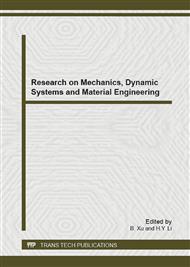[1]
Krishnan R.: Switched reluctance motor drives: modeling, simulation, analysis, design, and applications (Boca Raton, FL, USA, 2001).
DOI: 10.1201/9781420041644
Google Scholar
[2]
Filicori F., LoBianco G.C., Tonielli A.: Modeling and control strategies for a variable reluctance direct-drive motor, IEEE Trans. Ind. Electr. Vol. 40(1) (1993), pp.105-115.
DOI: 10.1109/41.184827
Google Scholar
[3]
Sahoo S. K., Panda S. K., Xu J.: Indirect torque control of switched reluctance motors using iterative learning control, IEEE Transactions on Power Electronics, Vol. 20(1) (2005), pp.200-208.
DOI: 10.1109/tpel.2004.839807
Google Scholar
[4]
Cao J. Y, Chen Y. P, Zhou, Z.D.: Robust control of switched reluctance motors for direct-drive robotic applications, International Journal of Advanced Manufacturing Technology, Vol. 22(3-4) (2003), pp.184-190.
DOI: 10.1007/s00170-002-1458-0
Google Scholar
[5]
Balaji M., Kamaraj V., Ramkumar S.: Optimum Design of Switched Reluctance Machine for Electric Vehicle pplications Using Chaotic Particle Swarm Optimization, International Review of Electrical Engineering-Iree, 6(2) (2011), pp.770-776.
DOI: 10.1109/icees.2011.5725322
Google Scholar
[6]
Shang W., Zhao S.: A Sliding Mode Flux-Linkage Controller with Integral Compensation for Switched Reluctance Motor, IEEE Transactions on Magnetics, 45(9) (2009), pp.3322-3328.
DOI: 10.1109/tmag.2009.2021264
Google Scholar
[7]
Yan H.S., Chen W.R.: A variable input speed approach for improving the output motion characteristics of Watt-type presses, International Journal of Machine Tools and Manufacture, 40(4) (2000), pp.675-690.
DOI: 10.1016/s0890-6955(99)00087-5
Google Scholar


